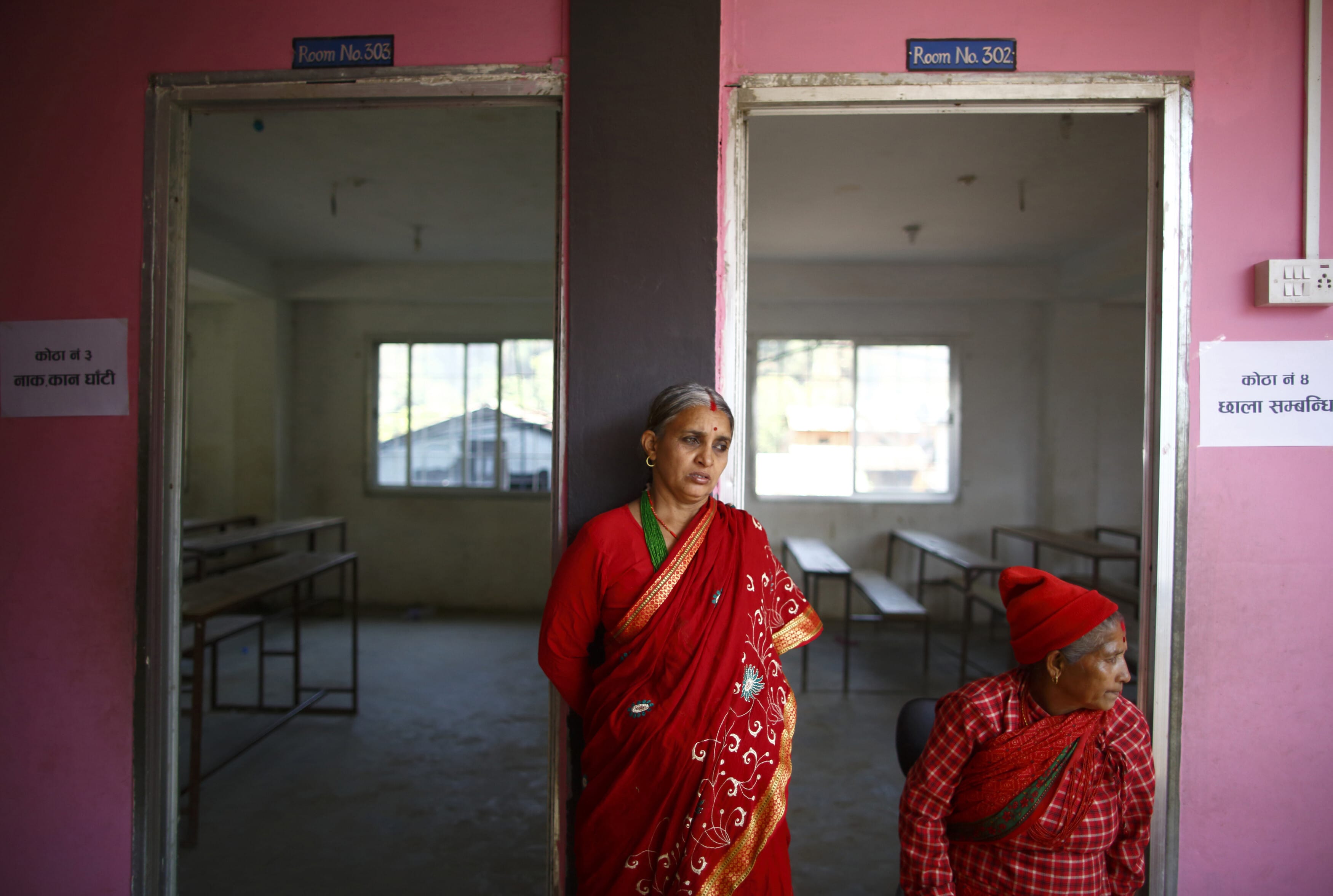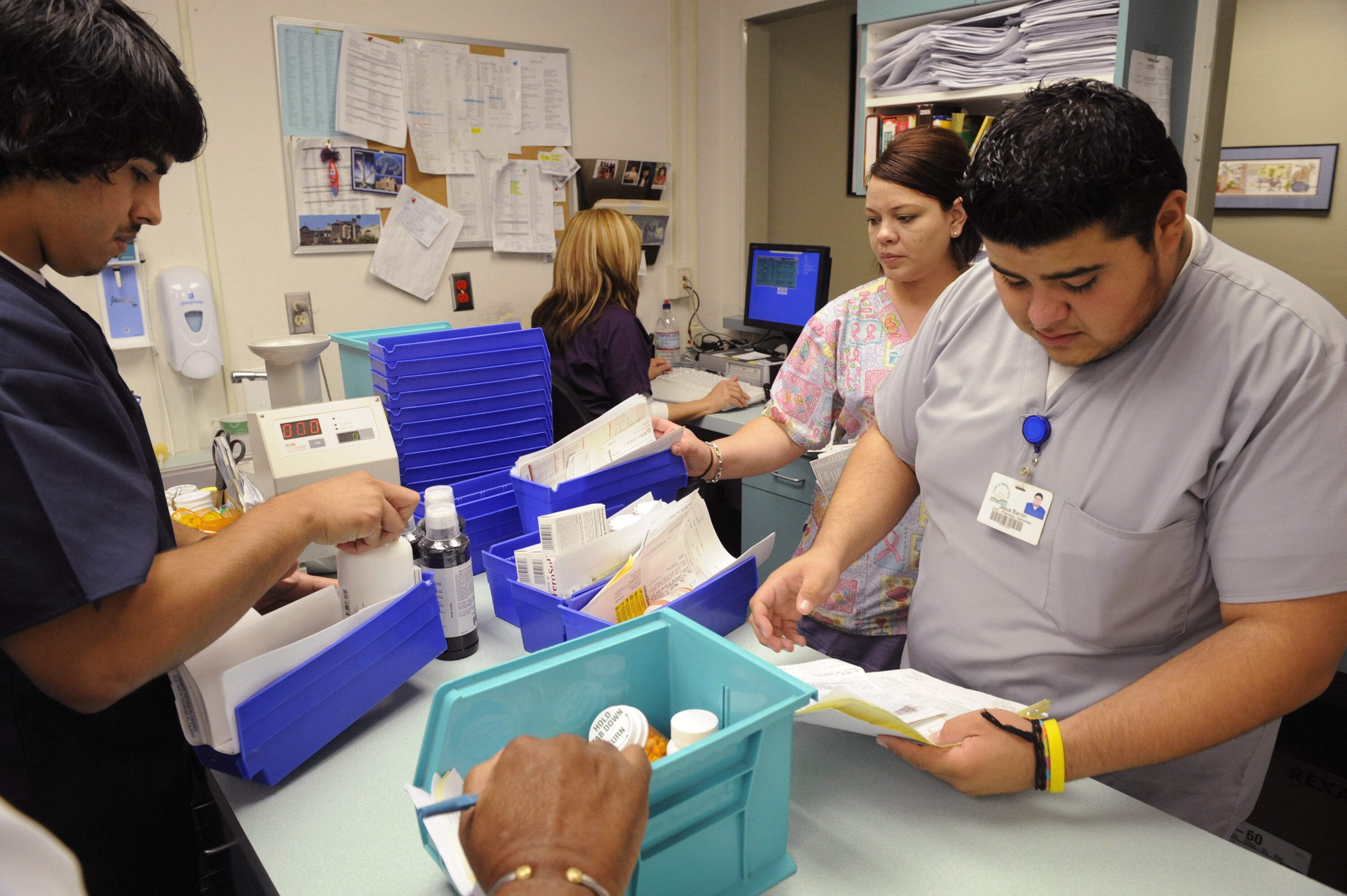7 trends to watch in 2022

The digital transformation of work and healthcare is seen as a key trend for 2022.
Image: Headway/Unsplash
Julie Battilana
Professor of Organizational Behavior and Social Innovation, Harvard University, Founder of the Social Innovation and Change InitiativeRegina E. Herzlinger
Nancy R. McPherson Professor of Business Administration (Leave of Absence), Harvard Business SchoolRobert S. Huckman
Albert J. Weatherhead III Professor of Business Administration, Harvard Business SchoolStay up to date:
Pandemic Preparedness and Response
- Some of the trends to look out for this year according to Harvard Business School faculty include digital health care, NFTs, and a changing workforce.
- Technology is set to continue to drive change.
As 2022 gets underway we asked our faculty to highlight some trends worth watching in the coming year.
Ariel Stern: A new future for digital health care
While 2020 and 2021 were years of rapid innovation and deployment of new health care technologies and delivery modalities, 2022 will be a big year for learning about what works in digital health. Recently, we have witnessed developments that would have been difficult to imagine just a few years ago.
In the United States, we have seen massive expansions in insurance coverage for remote patient monitoring—defined as the automated, remote collection of patient physiological measurements such as blood pressure, weight, or blood glucose levels—and both commercial health insurers as well as the Medicare system have seen dramatic increases in the use of these services in conjunction with networked devices.
In Germany, the past 15 months have seen the rollout of “prescription apps” and the introduction of a system of nationwide health insurance coverage for digital health applications, the first of its kind worldwide.
These developments are compelling and allow us to imagine the promise of digital tools to improve individuals’ health and their experiences engaging with the health care system. But we are still learning what “good” looks like and we still have a long way to go in understanding which tools work, how well, and for whom. I believe that expansive growth in these new technologies, coupled with ever-better data on performance and health outcomes will mean that 2022 will be a year of learning and reflection.
Digitization in health care should be seen as a means to an end—improving the quality, patient-centricity, equity, and convenience of the formal health care system—not a goal in and of itself. Data and insights from 2022 will help us start to understand the impact of these new technologies and, I hope, allow us to move forward in pursuing a more thoughtful, more evidence-driven vision of the digital future of health care.
Ariel D. Stern is the Poronui Associate Professor of Business Administration.
Scott Duke Kominers: NFTs go mainstream
Last year saw a huge spike in the creation and sale of non-fungible tokens (NFTs), digital ownership records stored on distributed ledgers called blockchains. People bought and traded NFTs of everything from contemporary art to images of apes and a giant tungsten cube. While some find the idea of exchanging digital tokens puzzling, in many ways it’s nothing new—through the same type of technology that powers cryptocurrency, NFTs provide a sort of “digital deed” that we can use to establish ownership of a variety of goods. They make it possible to assign and transfer ownership to assets like digital art and music tracks, and also help make it clear who the owners are, so they can coalesce into communities. Moreover, NFTs are programmable—which makes it possible to expand their features and value over time.
Now mainstream brands like Pepsi and Adidas—as well as popular celebrities like Ozzy Osbourne and writers like Ben Mezrich—are getting into the NFT market. And with Coinbase opening its own NFT marketplace this year, these products will become significantly more accessible to consumers.
We can expect to see NFTs being used to build brands, gate access to a variety of services, establish online reputation, and—eventually—find broader application in the physical world, such as for event ticketing. And major media and collectibles franchises will start moving into the NFT space—Pokémon NFTs, for example, could really set the market on fire. Perhaps even more importantly, NFTs have already proven that they can bootstrap communities of consumers and capture the public’s imagination in a way that cryptocurrency mostly hasn’t. The demand for NFTs is already driving innovation to make crypto wallet technology to more intuitive and better protected for consumers. So it’s also likely that NFTs will help (finally!) take crypto mainstream.
Scott Duke Kominers is the MBA Class of 1960 Associate Professor of Business Administration.
Robert S. Huckman: Flexibility in health care could boost access
When the COVID-19 pandemic began in early 2020, many aspects of health care delivery in the United States changed—at least temporarily—out of a need to expand access to care. Outpatient care shifted from offices to telemedicine visits. Non-physician clinical staff—such as nurse practitioners and physician assistants—were allowed to perform certain duties independently, without the direct supervision of a physician. And physicians, themselves, were increasingly able to provide care across state lines. Together, these changes helped maintain access to care while reducing the risk of COVID exposure—for both patients and providers—and easing strain on health care facilities that were inundated with patients requiring intensive treatment.
As the first wave of the pandemic subsided, however, several of these temporary changes were reversed or allowed to expire. Now, in early 2022, our health care system is again inundated, this time by the Omicron variant. The need for expanded access again looms large as the overall population—including health care providers—encounters a substantially higher risk of being infected with COVID and unable to engage in in-person care encounters.
The access challenges that have accompanied each wave of the COVID pandemic remind us of the underlying need for increased care access that has existed in the US since well before N95 masks, PCR tests, and mRNA vaccines were part of our common parlance. Like nearly every burden of this pandemic, this historical lack of access has fallen disproportionately on the shoulders of poorer communities. As the United States wrestles with the Omicron wave, my hope is that the health care system can learn from its recent ability to increase access in moments of broad crisis to develop strategies to help those who will otherwise face pervasive access challenges once this global pandemic has subsided.
Robert S. Huckman is the Albert J. Weatherhead III Professor of Business Administration and the Howard Cox Health Care Initiative Faculty Chair.
Joseph Fuller: Businesses face a changed workforce
In 2022, employers will begin to understand the full impact of COVID on human resource management. Most companies have viewed the ructions caused by COVID as an anomaly. They aren’t. COVID accelerated a number of trends that were latent in the labor market before the onset of the pandemic. Companies will now have to account for them in their human resource strategy. The disruption is far beyond what most imagine.
Companies will have to re-engineer every core process to account for changes in workforce demographics in the post-COVID world. The supply-demand balance will become a permanent feature in recruiting. Companies will need to open the aperture on their hiring in order to attract a sufficient number of applicants to meet their needs. They will also need to relax the many superfluous conditions they have applied in evaluating job seekers. Abandoning business models based on the assumption that low-wage workers should turn over at a high rate will also be necessary. Many companies assume that 50 percent, 100 percent, even 200 percent annual turnover in workers is “normal.” As a result, they fail to invest in programs such as upskilling that will dramatically improve their retention rate. The winning formula will be based on minimizing turnover, not minimizing the next periods wage expense.
Firms will be seduced into focusing on artifices for minimizing turnover in their highly skilled, white-collar workforce. That’s the wrong issue. COVID has caused many such workers to reconsider the role of work in their lives. Firms dependent on such talent would be better served to consider how they can reshape their job descriptions to retain talent fed up with fulfilling various corporate process “requirements” or how to make themselves attractive together to gig workers with world-class skills.
Joseph Fuller is a professor of management practice and co-leads the Managing the Future of Work initiative.
Rosabeth Moss Kanter: Coalitions and climate change
My wish is that 2022 will be dominated by glorious visions of a green and blue economy future, but I’m afraid politics will interfere with those efforts. In 2022, in the US, big national political issues, like the future of democracy, will be in the air and in the media. CEOs will have to make tough choices about whether to weigh in on democracy issues, such as voting rights, while contentious political divides will undoubtedly be echoed in heated conversations inside workplaces. Work cultures will be stressed anyway, as the continuing COVID-19 pandemic uncertainty puts people on edge. Employee loyalty has waned and resistance grown. Leaders could suffer empathy fatigue and become less understanding, but leaders from every sector will need to work together and listen to community voices to set priorities.
Despite all of this, even if there is increased national funding for climate change proposals—a big if—there will be tough political choices at the state and local level. To combat sea level rise, should coastal cities build living shorelines with natural barriers or construct concrete sea walls? Can low-income communities afford to weatherize buildings when residents struggle with paying utility bills? With transportation as one of the biggest sources of carbon emissions, should budget-limited school systems invest in new electric buses over direct education expenditures?
Expectations for business leadership will be greater than ever. For example, real estate developers will be expected to not just comply with building codes but actively contribute to crafting higher standards. Bankers will be asked to promote green and blue ideas. With more women and people of color rising in executive ranks (finally), communities will look to them to represent the needs of vulnerable populations.
2022 could be the year of the coalition. The leadership skill most in demand will be the ability to work across divides to align independent organizations behind a shared agenda in pursuit of a greater purpose. Healthier communities powered by the green and blue economy would be a good start
Rosabeth Moss Kanter is the Ernest L. Arbuckle Professor of Business Administration.
Julie Battilana: Workers gain more power
As we greet 2022, another wave of COVID-19 infections lays bare the multidimensional crisis at hand. The public health crisis is anything but isolated: It has revealed and deepened both economic and social crises characterized by rising inequalities, unfolding on the backdrop of an increasingly severe environmental crisis. This multidimensional crisis is fundamentally a crisis of power concentration. As my co-author Tiziana Casciaro and I explain in our new book Power, For All, power comes from controlling valued resources. Over the past four decades, neoliberal policies have shifted power and wealth in the hands of a small minority, while accelerating the destruction of the planet. 2022 is a critical juncture: We can continue as is, reproducing the neoliberal economic model, which will result in further inequalities and the destruction of the planet, or we can dare to rethink and reform our economic and social systems in depth.
To do so, power sharing—the structural redistribution of resources from the hands of the few to the many—is essential. It must take place within companies too. Research indicates that corporations have contributed to creating and continue to reproduce social and economic inequalities. Dominant business models that prioritize shareholder value maximization and short-term financial gains, largely at the expense of employee, climate, and societal welfare, have contributed to this crisis of power concentration. Power sharing entails giving workers a seat and a vote in their companies' decision-making bodies, with the power to accept or reject strategic decisions. In 2022, innovative business practices meant to empower employees and give them a real say in their companies’ decision-making process will need to be supported and studied. The Great Resignation is making it clearer everyday: The old hierarchical model no longer suits employees; they want to have a say in their working conditions and they aspire to find more meaning at work.
What is at stake, though, is not only a fairer distribution of valued resources up and down the organizational chart, but also between employees across race, gender, and class. Over the past five years, the energy of social movements like Black Lives Matter and #MeToo has made power sharing across race, gender, and class—and their intersections—an imperative. Here, again, corporations have a critical role to play. Building truly inclusive workplaces requires considerably more than one-off diversity trainings or publicity campaigns that too often tokenize women and people of color. It requires changing the practices that dictate who power flows to in organizations. This entails a serious commitment to tracking and rewiring how opportunities and resources are distributed in the organization. As record numbers of Americans quit their jobs in search of better work and life arrangements, power sharing offers an antidote to power concentration and a pathway to better work. It offers a gateway to changing our social and economic systems, starting inside organizations.
Julie Battilana is the Joseph C. Wilson Professor of Business Administration at Harvard Business School and the Alan L. Gleitsman Professor of Social Innovation at Harvard Kennedy School.
Regina Herzlinger: Health care innovations—and inequities
COVID’s devastating impact has a silver lining. In this case, the lining was lithium, in the form of consumer-driven innovations that created alternate, lower cost sites of care, such as free-standing retail medical, surgery, and urgent care centers; telemedicine, sensors and other sources of personalized care in the home; and artificial intelligence engines that parse this massive new trove of information to improve the quality, access, and cost of care.
COVID also unleashed consumer-driven public policy changes, including allowing pregnancy termination pills to be purchased over the counter and adding social determinants of health, such as allergens that may infest the homes of people with respiratory diseases, to insurance benefits.
COVID unlocked these innovations because the US had too few hospital beds to meet the surge in demand it caused. Astute entrepreneurs poured massive funds into innovations to bolster consumers who needed non-hospital sources of care. Although employers should assure that their employees have access to these innovations, caveat emptor applies. The first innovator is usually not the most successful; many consumer-facing retail medical clinics are low ranked; the business models of others may feature unsavory conflicts of interests; and all of them face massive regulatory push back from the politically powerful hospital sector that fears this competition.
The health care sector is excessively costly, inaccessible, and inequitable. Because health insurance payments for most insured employees are not adjusted for income, inequality was heightened as lower-income employees paid more and more for policies that required higher out of pocket payment and offered depersonalized care in inaccessible locations of unknown quality. These COVID led consumer-driven innovations can help correct these flaws; but their path is a rocky one.
Regina Herzlinger is the Nancy R. McPherson Professor of Business Administration.
Accept our marketing cookies to access this content.
These cookies are currently disabled in your browser.
Don't miss any update on this topic
Create a free account and access your personalized content collection with our latest publications and analyses.
License and Republishing
World Economic Forum articles may be republished in accordance with the Creative Commons Attribution-NonCommercial-NoDerivatives 4.0 International Public License, and in accordance with our Terms of Use.
The views expressed in this article are those of the author alone and not the World Economic Forum.
Forum Stories newsletter
Bringing you weekly curated insights and analysis on the global issues that matter.
More on Health and Healthcare SystemsSee all
Andrea Willige
September 22, 2025
David Elliott
September 22, 2025
Amira Ghouaibi
September 22, 2025
David Elliott
September 19, 2025
Nina Rawal and Dorothy Chou
September 18, 2025
Eric White and Elia Tziambazis
September 18, 2025






